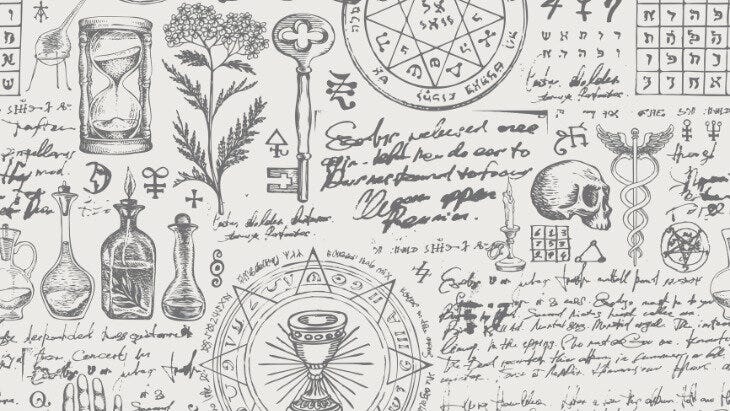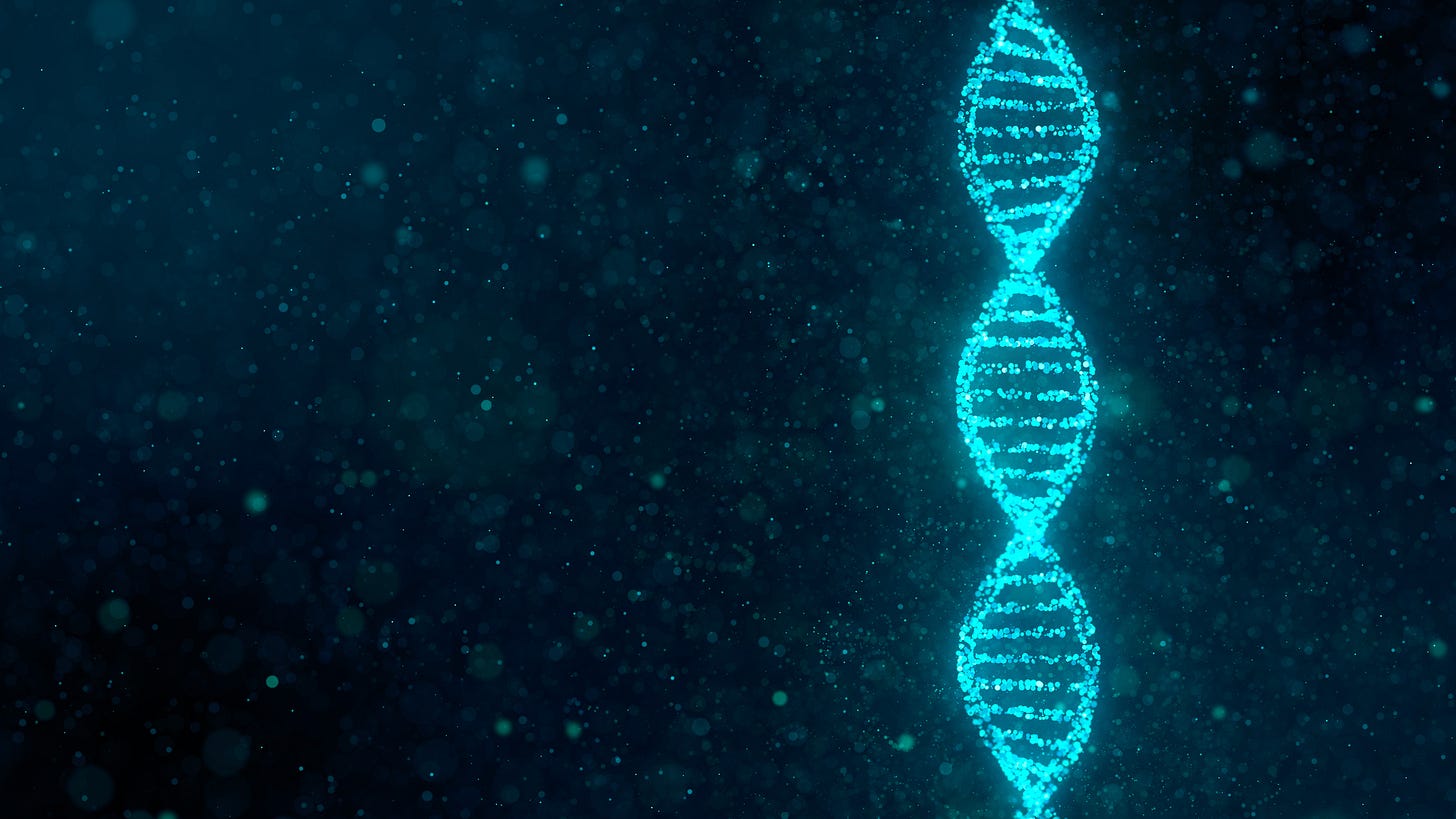When Science and Religion Hold Hands
How to create cultural rocket fuel
I was not interested in science for the first half of my life. In high school, I figured out how to completely avoid taking (what I regarded as) the mind-numbing disciplines of chemistry and physics in favor of more tangible classes like Earth Science and Marine Biology. It is, therefore, ironic that at this juncture in my cognitive journey, I am quasi-obsessed with science—specifically, with its potential to provide the bedrock intellectual scaffolding for the potential truth of a mystical reality.
Many scientists would blanch at this thought. By their lights, if anything, their work is relegating mystical accounts to the juvenile imaginations of those who still believe in seances, Sasquatch, and unicorns. And yet, the more I survey the current scientific and philosophical landscape, the more the two appear to converge.
I have had the privilege of conducting about three dozen in-depth conversations with some of the world’s most significant thought leaders in the last few years. Some are quite supportive of the notion of a transcendent reality and, in fact, find it to be an inescapable conclusion of their research.
To me, the even more interesting phenomenon is when those who consider themselves materialists, atheists, and/or nihilists seem to also say things that sound mystical (using only scientific terminology). I can’t help but feel that they, too, are significantly contributing to the model of a purposeful, non-material universe, though they wouldn’t think to describe it in those terms. To them, it’s just science.
For instance, from one leading physicist, I learned that time does not really exist (certainly not in the way that we experience it) and that particles do not exist either. From another, I learned that there is an ultimate Oneness to all of reality. A near-death experience researcher I spoke with had a hard time believing that I was familiar with the concept of NDEs not through the modern research of it, but rather due to my exploration of it in ancient mystical thought, and an Oxford anthropologist seemed to agree that love is not a feature of the physical world but rather of some higher one. (Parenthetically, all were highly intelligent, open, intellectually honest, and agreeable).
Many people still believe that religion and science are locked in a kind of cerebral death struggle—that there is a fundamental disconnect between what paleontologist Stephen Jay Gould called “non-overlapping magisteria.” And yet, there is good reason to believe that the two have been, are, and always will be a singular, Janus-faced (in the best sense of the term) consciousness, striving to comprehend reality from two different vantage points.
Science itself was established and developed by people who believed in an underlying order and meaning to the Universe. By comprehending what was originally called “natural philosophy” (science), they would, in fact, be doing nothing less than comprehending the mind of the Creator. As Galileo said, “Mathematics is the language in which God has written the universe.” This was the motivation for many hundreds of years.
On the other side, mysticism has been, and is, much more interested in scientific matters than most people are aware of. The examples I’ll mention come from Kabbalah, as that’s the system I am most familiar with, but it holds true of many others. For example, the 18th-century Italian Kabbalist Moshe Chaim Luzzatto had a system of study that required the study of mathematics, logic, and scientific knowledge. Rabbi Elijah Kramer of Vilna taught his students that “there is no way of reaching the [ultimate] level except with the extensive and precise study of both extremities of knowledge, from the depths of the earth to the heights of the Heaven…to thoroughly study the secrets of our Torah which come from supernal wisdom [the Kabbalah] and to thoroughly study science…they are bound together.”
Remarkably, the Zohar, arguably the quintessential Kabbalistic work, predicted that from around the year 1840, there would be a ”supernal opening of the gates of wisdom from above and the wellsprings of knowledge from below.” This refers to a simultaneous awakening of the mystical and scientific worlds. It explains that “even children will be able to understand hidden wisdom…at that time it will be revealed to all.”
And this is my point. I myself am a child with regard to science. Nonetheless, I am able to understand and process my spiritual knowledge with the invaluable aid of scientific discoveries. It’s just so well aligned that I keep blurting out one or another Kabbalistic idea each time I hear these scientists expound on their science in these interviews. For example, as explained by Avinoam Fraenkel:
“There is a kabbalistic principle that every whole contains all the parts, but at the same time, every part contains the whole. Until very recently, this was a very difficult concept to relate to, but with the recent scientific understanding of what DNA is, every child knows that every human cell in a person’s body contains DNA and that the DNA is a code structure from which the whole body is constructed.”
Far from being “non-overlapping magisteria,” science and mysticism are as entwined as the left and right brains—two peas in a pod. To ignore one is to do so to the detriment of the whole, to stymie our ability to comprehend the full spectrum of reality, and even to stunt our advancement as a species. Not everyone is cognizant of it just yet, but my feeling is that when these two forces reconcile, they will go forth and do more good together than any of us can currently imagine.






"My feeling is that when these two forces [science and mysticism], they will go forth and do more good together than any of us can currently imagine." Yes, I intuit that as well!
One can contemplate the similar terms of "mind" and "heart." We have incredible scientific knowledge in the mind, sufficient to build efficient technologies to kill each other, but we lack the heart's wisdom to realize we are all connected. The mind can find a home in the heart, and the heart and the mind come to know in that space that they’re the same. Likewise science can find a home in mysticism and they can be unified.
Great observations, Adam. I'm so glad I came across your writing and work!
Brother sliced from the same loaf of bread.
The experience from the clinic room is echoed in the study hall and in the National Library of Medicine. There is one big conversation brewing between clinical medicine, Kabbalah, and research.
Our state of physical well-being is a sea of information integrating all of our biological systems. And our embodied self and Default Mode Network is swimming in that sea of information, along with our thoughts, emotions, memories, and beliefs about ourselves. And so it goes, replaying the movie of our body, mind,and emotional identity every minute. So we deeply believe in our disease, our distress, our limitations.
Meanwhile, our transcendent self, our Neshama, is emanating through all of that, and hovering above it. It's waiting and begging us to open up our minds and witness a bigger Knowing. A bigger Knowing with a big "K". A bigger Knowing that offers to dissolve, transcend, and heal our deepest problems.
In our bigger transcendent knowing, we see how we share the pain and joy of life and we stop blaming ourselves and stop blaming each other. We give our energy to solutions that integrate the Big Knowing with all the small details. The small details that are begging to reveal the big Knowing.
I look forward to hearing more from you.